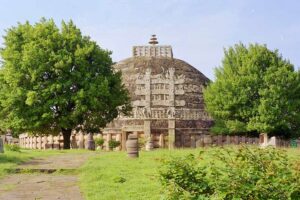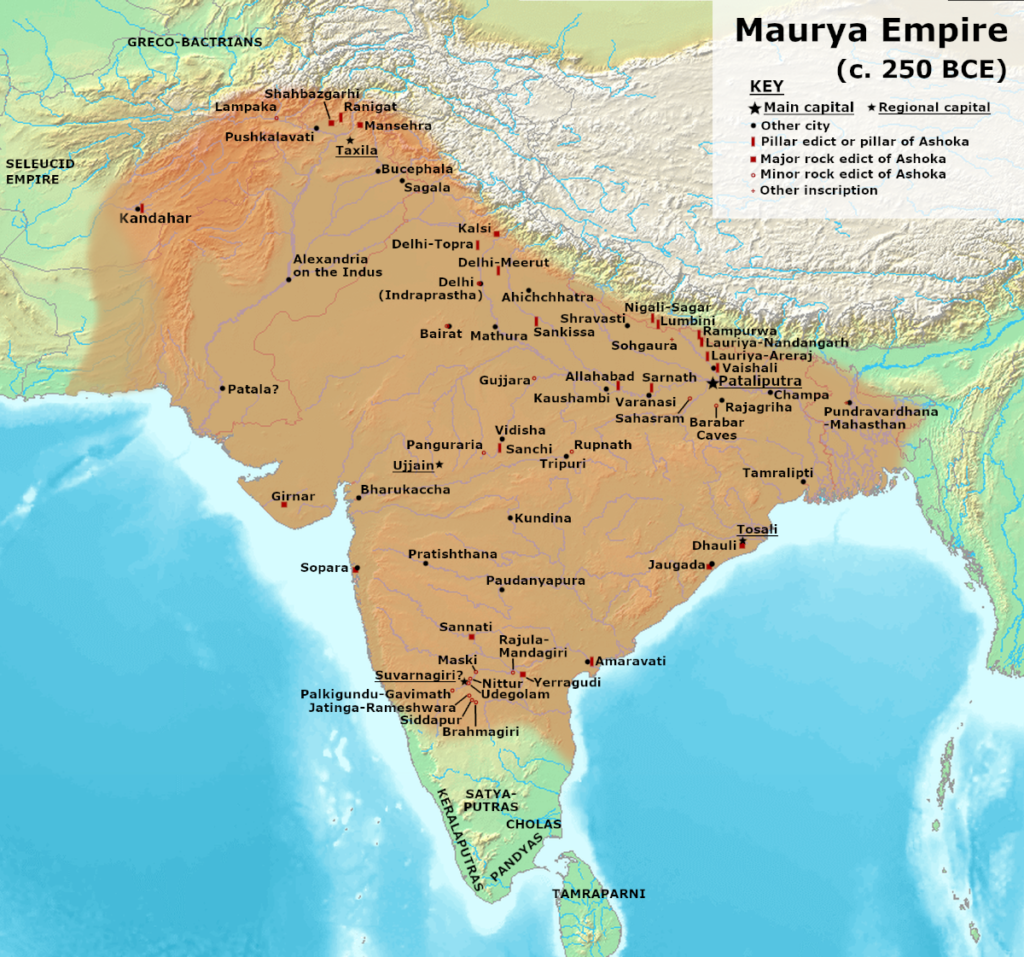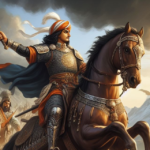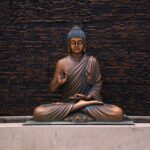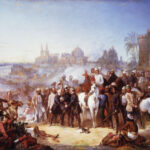1.Chandragupta Maurya:
The founder of the Maurya dynasty was Chandragupta Maurya. He was the first historical emperor of India. He was the first emperor who established his rule over Greater India and whose extent was larger than the British Empire. The border of his empire used to meet with Iran.William Jones was the first scholar, who identified ‘Sandrokottos’ with the Maurya ruler Chandragupta Maurya.
In Visakhadatta’s ‘Mudrarakshasa’, Chandragupta is considered the son of Nandraj. In Mudrarakshasa, Chandragupta has also been called ‘Vrishal’ and ‘Kulaheen’. Two other compositions are also mentioned in the name of Visakhadatta – (1) Devichandraguptam and (2) Abhisarika Vanchitaka or Abhisarika Banditaka (unreachable).
In Kshemendra’s ‘Brihat Katha Manjari’ and Somdev’s ‘Kathasaritsagara’, details about the Shudra origin of Chandragupta are found. According to the Buddhist text Mahabodhivansh, Chandragupta belonged to the royal family and was born in the city of Moriyya.
The Arthashastra, written by Kautilya (Chanakya) in the Maurya period, is a book of principles of governance. In this, the explanation of the seven principles of the state – Raja, Amatya, Janpad, Fort, Kosh, Dand and Mitra is found. Kautilya’s ‘Arthashastra’ is not a historical book, but a unique treatise of political science.
Chandragupta Maurya had conquered South India.Chandragupta’s empire extended over the region from the Vyas river to the Indus river. Rudradaman’s inscription proves his authority over western India. According to Jain texts, Chandragupta Maurya had authority over Saurashtra as well as Avanti. Chandragupta Maurya killed the invading army of Seleucus, the ruler of the eastern part of the empire of Alexander (Shikander), in 305 BC.
After ruling successfully for 24 years, he sacrificed his life while fasting like a Jain monk at a place called Shravanabelagola, Karnataka in 297 BC. Chandragupta Maurya was 48 years old at the time of his Death.
2.Bindusara
“Greek writers called Bindusara Amitrocades. According to scholars, the Sanskrit form of Amitrokedes is Amitraghata (destroyer of enemies). Jain texts call him ‘Singhsen’. According to Divyavadan, there was a rebellion in Taxila during the time of Bindusara, to suppress which he had sent his son Ashoka.
According to Strabo, during the time of Bindusara, the Egyptian king Antiochus sent an ambassador named Dimachus. According to Pliny, the Egyptian king Ptolemy II Philadelphus sent an ambassador named Dionysos to the Mauryan court. Bindusara demanded three things from Antiochus, the ruler of Syria. These things were sweet wine, dry figs and the philosopher Antiochus sent everything except the philosopher to Bindusara.
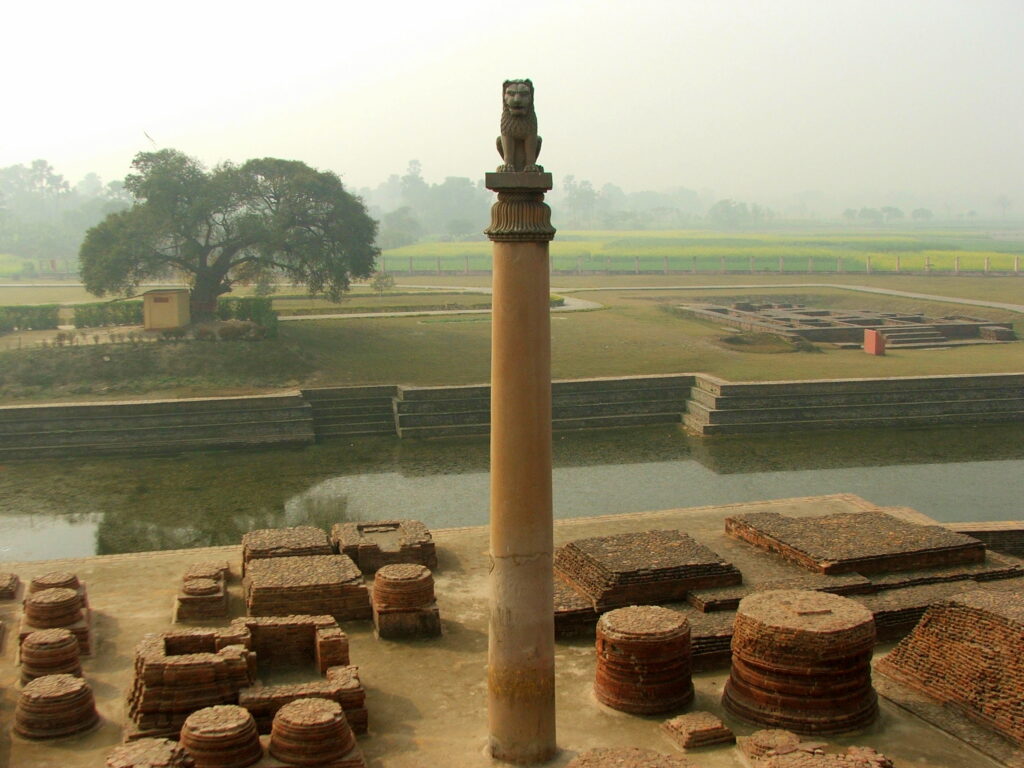
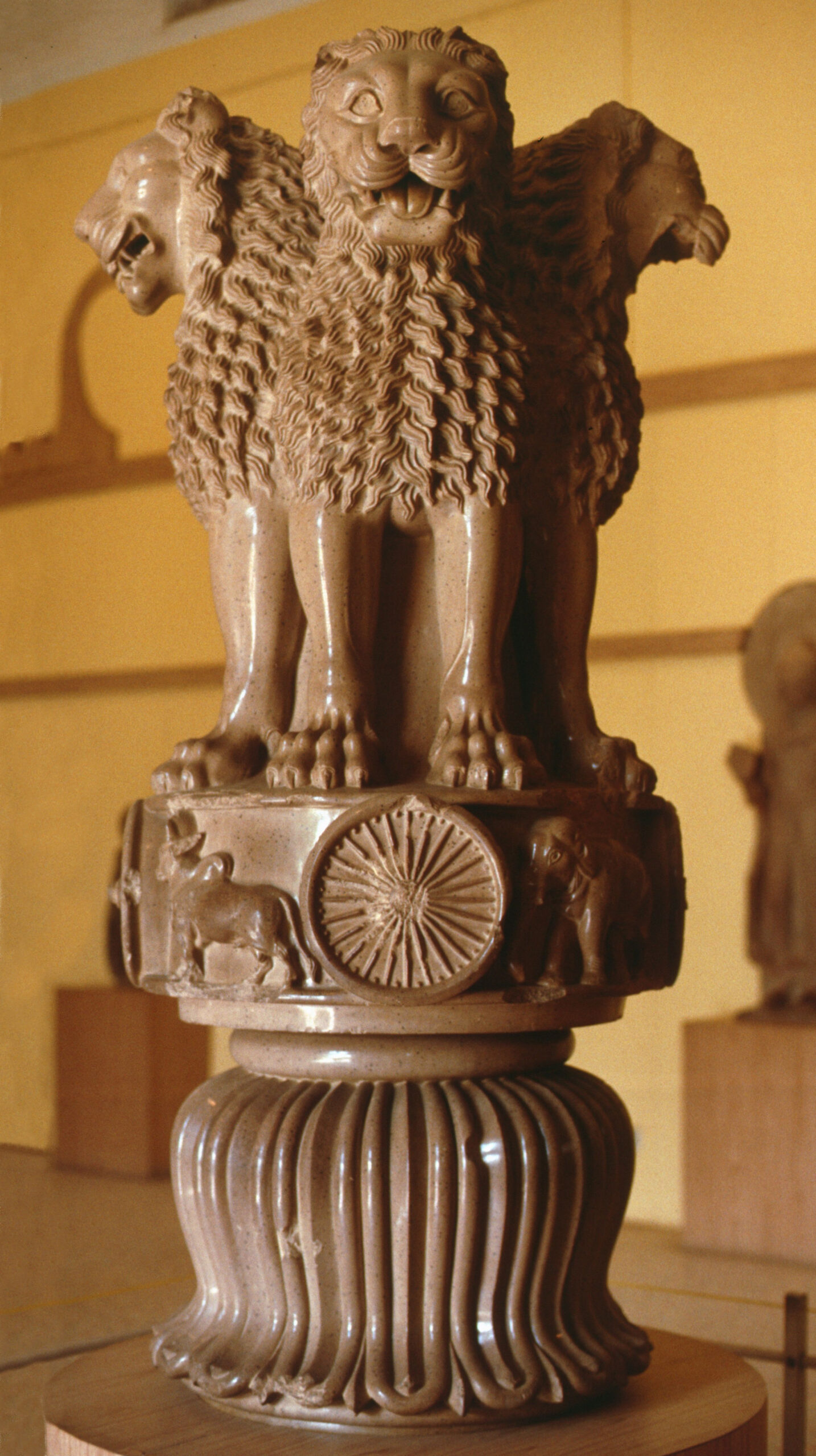
3.Ashoka
According to Buddhist evidence, Ashoka was the viceroy of Avanti (Ujjayini) during his father’s reign. The whole of India, except Assam and the far south, was under Ashoka’s empire. Ashoka, keeping in mind the huge group of his subjects, rendered such a practical ‘Dhamma’, which can be easily followed by all. Tolerance, generosity and compassion were his three dimensions. In 269 BC, Ashoka was crowned. In his inscriptions, he has been everywhere called ‘Devnampiya’, ‘Devanampiyadasi’ which means ‘beloved of the gods’ or ‘beautiful to see’. He has been called ‘Ashokvardhan’ in the Puranas. Dasharatha also used to bear the title of ‘Devanampiya’ like Ashoka.
According to Sinhalese legends-Dipvansh and Mahavansh, the third council of Buddhism took place in ‘Pataliputra’ during the reign of Ashoka. It was presided over by a famous Buddhist monk named ‘Moggaliputta Tissa’.
According to the Dipavansh and Mahavansh, Ashoka was initiated into Buddhism in the fourth year of his reign by a monk named ‘Nigrodha’. Thereafter he became a complete Buddhist under the influence of Moggaliputta Tissa. According to Divyavadana, Ashoka was initiated into Buddhism by a Buddhist monk named Upagupta. Among the Mauryan rulers, Ashoka and his grandson Dasharatha were followers of Buddhism.
There is a mention of an officer named ‘Rajjuk’ in the inscriptions of Ashoka. The status of the rajjuks was like that of the modern district magistrate, who had authority in both revenue and justice areas. In the Mauryan period, the head of the trading convoys (caravans) was given the name of Sarthavaha. Ashoka traveled to Bodh Gaya in the tenth year of his coronation. In the twentieth year he traveled to Lumbini and established a stone pillar there. Due to being the birthplace of Buddha, he waived off Lumbini village and reduced the land revenue from 1/6 to 1/8.
The inscriptions of Kalsi, Girnar and Meerut are in Brahmi script. The history of Ashoka is known to us mainly from his inscriptions. His records can be divided into 3 sections (1) inscriptions, (2) pillar inscriptions and (3) cave inscriptions. The inscriptions are a set of 14 different inscriptions, obtained from eight different places. These places are- (1) Shahbazgarhi, (2) Mansehra, (3) Kalsi, (4) Girnar, (5) Dhauli, (6) Jaugarh, (7) Erragudi and (8) Sopara. Most of the inscriptions of Ashoka are written in Prakrit language and Brahmi script, only two inscriptions Shahbazgarhi and Mansehra have Kharosthi instead of Brahmi. A fractal inscription written in Aramaic script from Taxila, bilingual Greek and Syrian language inscriptions written in Greek and Aramaic scripts from a place called Sharekuna and Ashoka’s inscription written in Aramaic script from a place called Langhama has been found. The Brahmi script was first spoken with letters engraved on stone plates (inscriptions). The first scholar to edit this work was Sir James Prinsep who got the credit for reading Ashoka’s inscriptions. Dr. Bhandarkar has made a commendable effort to write the history of Ashoka on the basis of inscriptions only. The Pre-Ashoka Brahmi script was discovered from Anuradhapura in Sri Lanka. Evidence of this type of script has been found from the records of some other places, whose names are as follows – Piprahawan, Sohgaura and Mahasthan. In ancient India, Kharosthi script was written from right to left. It was mainly the script of North-West India. The Gujari miniature inscription mentioning Ashoka is located in Datia district of Madhya Pradesh. In the Bhabru (Bairat) pillar inscription, Ashoka has described himself as the emperor of Magadha. This inscription proves Ashoka to be a Buddhist believer. In the first inscription of Ashoka, the article regarding the prohibition of animal sacrifice is as follows- “No animal should be sacrificed here and no festival should be performed. In the first ‘Priyadarshi’ king’s kitchen, hundreds of animals were killed for meat every day. But now till the writing of this inscription, only three animals are killed daily – two peacocks and an antelope, even in this the deer is not always killed. These three will also not be killed in future. There is a clear mention of prohibiting the killing of animals.
The first major event of Ashoka’s reign was the Kalinga War and Ashoka’s victory in it. The thirteenth (XIII) inscription of Ashoka gives clear evidence in the context of this war. This incident happened after 8 years of Ashoka’s reign i.e. 261 BC. In this inscription he expressed his grief and remorse over the suffering caused by the Kalinga war. In Ashoka’s long inscription XII, the essence of all the sects has been wished not to increase and the measures to be followed for religious tolerance have been given. – went. In the second (II) and thirteenth (XIII) inscriptions of Ashoka, information about Tamraparni (Sri Lanka) including the Sangam kingdoms – Chola, Pandya, Satiyaputta and Keralaputra is found. It is known from the thirteenth inscription of the Maurya ruler Ashoka that Ashoka had friendly relations with five Yavana kings-Antioch (Antiokus-II Theos- Ruler of Syria), Turmay (Ptolemy I Philadelphus – king of Egypt), Antkini (Antigonus Gonatas” king of Macedonia or Macedonia), Maga (ruler of Cyrene), Alik Sundara (Alexander-Epyrus or king of Epirus).
The Sohgaura copper plate inscription from Gorakhpur district and the Mahasthan inscription from Bogra district of Bangladesh were composed in the Prakrit language of the Ashoka period and were written in the Brahmi script of the 3rd century BC.
Megasthenes was the Greek ambassador sent by Seleucus Nicator to the Rajya Sabha of Chandragupta Maurya. In the Maurya era, the administration of cities was run by municipalities. Whose chief was ‘Nagaraka’ or ‘Puramukh’. Megasthenes divided the then Indian society into seven categories, which are as follows – (1) Philosopher, (2) Farmer, (3) Animal Husbandry, (4) Artisans, (5) warriors, (6) inspectors and (7) ministers. Megasthenes does not mention the prevalence of slavery in Indian society. According to him, during the Maurya period no person could marry outside his caste or take up a different profession.
According to the historian Smith, the Hindukush Mountains were the scientific frontier of India. The names of 5 provinces of the Maurya Empire are found in the inscriptions of Ashoka.
| Serial No | Province | Capital |
| 1 | Uttarapath | Taxila |
| 2 | Avantirath | Ujjaini |
| 3 | Kalinga | Tosali |
| 4 | Dakshinapatha | Swarnagiri |
| 5 | Prachya ya Purvi Pradesh | Patliputra |
Bhag and Bali were the sources of revenue in ancient India. It is known from economics that the king was the owner of the land, he was entitled to a part of the production generated from the land. This tax was called ‘Bhaag’. Similarly ‘Bali’ was also a source of revenue. The work of collecting revenue in the Maurya Council of Ministers was done by the Collector. The Antpal looked after the border guards or the frontier forts, while the Pradestha was the administrator of the subjects or commissionerates.
Apart from the above-mentioned office-bearers, there are other office-bearers – Panyadhyaksha (head of commerce), Suradhyaksha, Sunadhyaksha (president of slaughterhouse), Ganidhyaksha (inspector of prostitutes), Sitadhyaksha (head of state agriculture department), Akaradhyaksha (head of mines), Laknadhyaksha ( The head of raid, iron head (head of metal department) and Navadhyaksha (head of shipping department). In Arthashastra it was mentioned, divorce has been allowed for the wife abandoned by the husband. There was a practice of divorce in Mauryan society. If the husband lived abroad for a long time or had a defect in his body, the wife could abandon him. Similarly, in the case of a wife being an adulteress or infertile, the husband was entitled to abandon her.
Foreigners were given the social status of Vratya Kshatriyas by Manu in Indian society. Sarnath Stam was built by Ashoka. The figure of a lion is built on the top of this pillar, which is a symbol of power. This replica has been taken by the Government of India as its emblem. All the pillars of the Mauryan era are made of sandstone of Chunar.
From the point of view of architecture, the Sanchi Stupa is considered the best. Sanchi is located in Raisen district of Madhya Pradesh. It was built by Ashoka. The earliest period of this stupa was the 3rd century BC. Bharhut’s Stupa is located in Satna district of M.P. The stupas of Sanchi and Bharhut were discovered by Alexander Cunningham. The Amaravati Stupa is located on the right bank of the Krishna River in Guntur district of Andhra Pradesh, colonel Colin McKenzie unearthed this stupa in 1797 AD. The Dhamek Stupa of Sarnath is of Gupta period, which is built on flat land without a base.
The remains of huge wooden buildings of Mauryan period have come to light from the excavations done at Bulandibagh and Kumhar near Patna (Pataliputra) in Bihar. The credit for bringing these to light goes to Spooner sir. The remains of the city’s wall have been found from Bulandibagh and the remains of Rajprasad from Kumrahar. Bulandibagh was the ancient place of Pataliputra.
The ambitious man who built the year 184 BC Founded the Sunga dynasty by killing the last Mauryan ruler Brihadratha, he is known in history as Pushyamitra Sunga.
